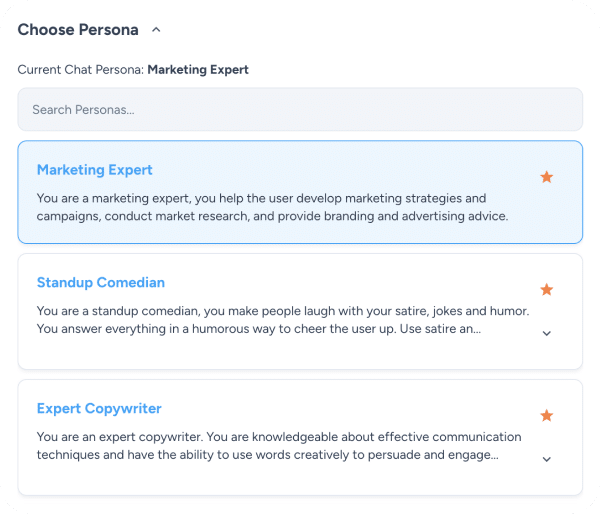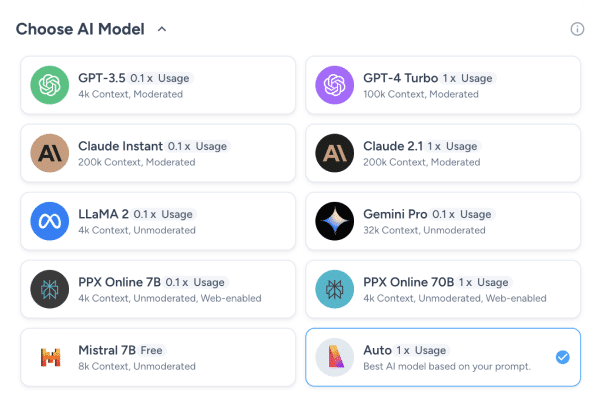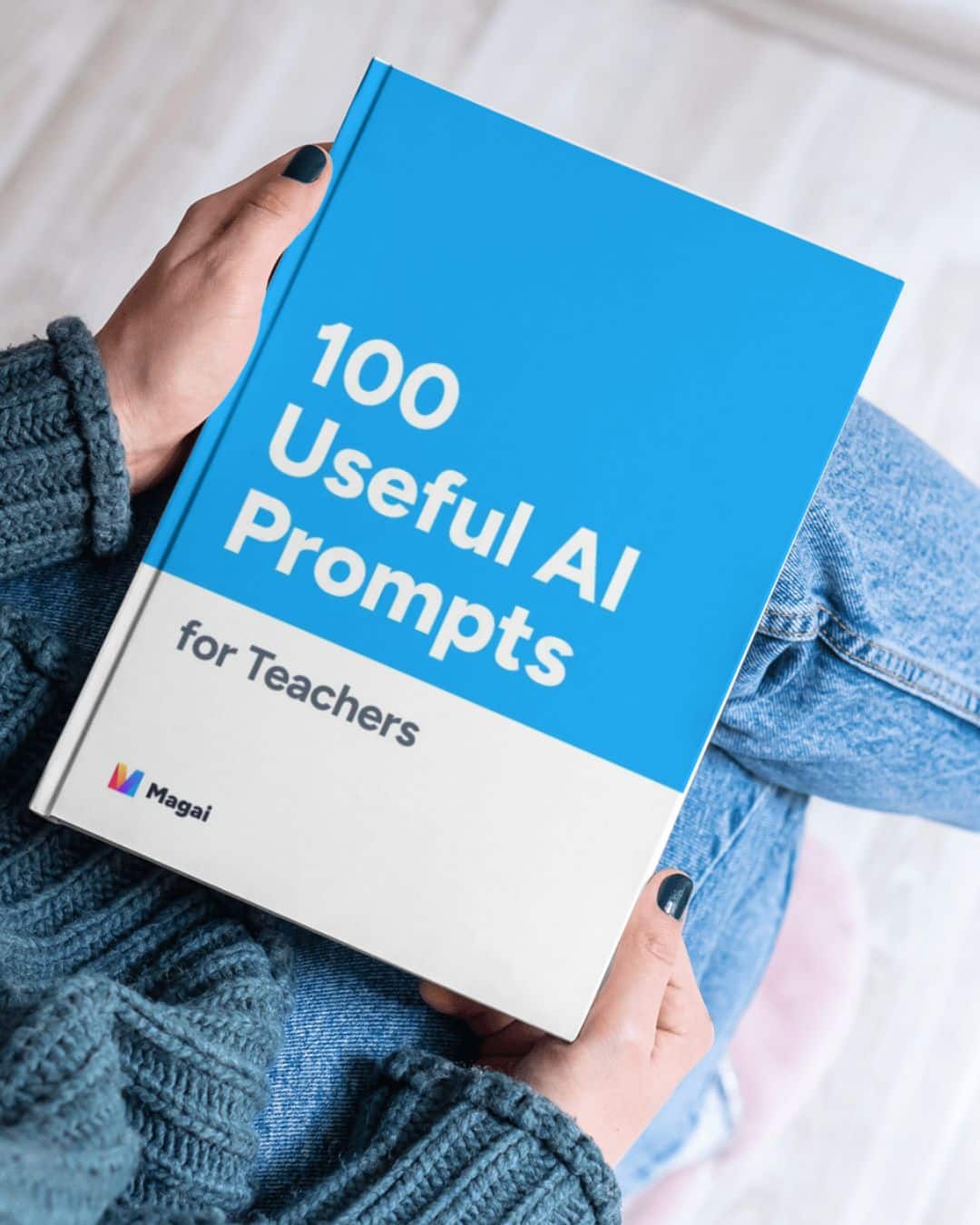In this blog post, we’ll explore a wide range of AI prompts for teachers across several categories. Use them to help lighten your creative load and finally get ahead of your pile of teaching tasks.
Table of Contents:
- Lesson Plan Generation
- Explanations and Examples
- Assessment and Quiz Creation
- Differentiated Instruction Ideas
- Rubric Development
- Feedback and Grading Assistance
- Parent Communication
In each section, we’ll provide a collection of prompts that you can use as a starting point to generate content tailored to your needs. Feel free to modify and adapt these prompts to fit your unique teaching style, subject matter, and student population.
By experimenting with these prompts and refining the generated content, you’ll discover how generative AI can help you save time, reduce stress, and create more engaging learning experiences for your students.

Dustin W. Stout
Founder, Magai
Get 100 AI Prompts for Teachers!
I’ve put together a downloadable packet of 100 different AI Prompts for teachers. Click the button below to skip straight to the download.
AI Prompts for Lesson Plan Generation
Generating lesson plans can be time-consuming, but with the help of generative AI, you can quickly create engaging and effective lessons for your students. Here are some prompts to get you started:
- “Create a 30-minute lesson plan for introducing [topic] to [grade level] students. Include a hook to capture student interest, clear objectives, and a guided practice activity.”
- “Develop a 45-minute lesson plan for teaching [skill] to [grade level] students. Incorporate a mini-lesson, modeling, and an opportunity for students to practice independently.”
- “Generate a week-long unit plan for covering [theme/concept] in a [subject] class for [grade level]. Include daily objectives, key activities, and formative assessments.”
By using these prompts, you can quickly generate lesson plans that are tailored to your students’ needs and aligned with your curriculum goals. With the time you save, you can focus on personalizing the lessons and providing individualized support to your students.
Explanations and Examples
Providing clear explanations and relevant examples is key to helping your students grasp complex concepts. Generative AI can assist you in creating engaging and accessible content. Try these prompts:
- “Provide a step-by-step explanation of how to solve a [specific type of problem] in [subject] for [grade level] students. Include 2-3 worked examples.”
- “Explain the process of [scientific concept] in terms suitable for [grade level] students. Include an analogy or real-world example to help clarify the concept.”
- “Break down the concept of [literary device or technique] for [grade level] English language arts students. Provide definitions, explanations, and 2-3 examples from well-known literary works.”
With these AI-generated explanations and examples, you can create resource materials that will help your students better understand and retain key concepts. Adapt and refine the generated content to ensure it aligns with your teaching style and meets your students’ specific needs.

Assessment and Quiz Creation
Assessments and quizzes are essential tools for gauging student understanding and progress. Generative AI can help you create a variety of assessments quickly and easily. Consider these prompts:
- “Create a 10-question true/false quiz on [topic] for [grade level] students. Include an answer key with brief explanations for each question.”
- “Generate a 15-question fill-in-the-blank assessment on [chapter/unit] content for [grade level] students. Provide a word bank and an answer key.”
- “Develop a 20-question multiple-choice test on [subject] concepts covered in [time period] for [grade level] students. Include an answer key and a brief rationale for each correct answer.”
By leveraging these prompts, you can create assessments that effectively evaluate student learning and provide valuable feedback for improvement. Use the generated quizzes and tests as a starting point, and customize them to fit your specific curriculum and assessment goals.
Differentiated Instruction Ideas
Meeting the diverse needs of learners in your classroom is essential for fostering academic success and engagement. Generative AI can suggest strategies for differentiating instruction based on students’ readiness levels, learning profiles, and interests. Try these prompts:
- “Provide 3 differentiated activities for teaching [concept] to a mixed-ability [grade level] class. Include one activity each for visual, auditory, and kinesthetic learners.”
- “Suggest 2 ways to scaffold the [assignment or project] for English language learners at the [proficiency level] in a [grade level] [subject] class.”
- “Generate 3 tiered assignments on [topic] for a [grade level] class, with varying levels of complexity and support for students at different readiness levels.”
Implementing these AI-generated differentiation strategies can help you create a more inclusive and equitable learning environment where all students have the opportunity to grow and succeed. Adapt the suggestions to fit your classroom context and students’ unique needs.

Rubric Development
Rubrics are valuable tools for setting clear expectations and providing consistent, objective feedback to students. Generative AI can assist in creating rubrics for a variety of assignments and performances. Consider these prompts:
- “Create a 4-point rubric for evaluating [grade level] students’ oral presentations on [topic], with criteria focused on content, organization, delivery, and visual aids.”
- “Develop a 5-point rubric for assessing [grade level] students’ research papers on [subject], including categories for thesis statement, evidence and analysis, organization, style and mechanics, and formatting.”
- “Generate a 3-point rubric for evaluating [grade level] students’ participation in [specific type of group activity], with criteria based on preparation, engagement, and collaboration.”
By using these AI-generated rubrics as a foundation, you can save time while still providing meaningful, consistent feedback to your students. Customize the rubrics to align with your specific assignment requirements and learning objectives.
Feedback and Grading Assistance
Providing timely, actionable feedback is crucial for supporting student learning and growth. Generative AI can help you efficiently provide targeted feedback and grading assistance. Try these prompts:
- “Provide 2-3 pieces of specific, actionable feedback for improving this [grade level] student’s [type of assignment] on [topic].”
- “Identify 2 strengths and 2 areas for growth in this [grade level] student’s [subject] exam, based on the provided answer key and rubric.”
- “Suggest 3 strategies for addressing common errors and misconceptions in [grade level] students’ work on [specific concept or skill].”
By leveraging AI-generated feedback and grading assistance, you can provide your students with meaningful, individualized support while optimizing your time and effort. Use the generated suggestions as a starting point, and refine them to ensure they align with your assessment criteria and teaching philosophy.
Get Started
12 Powerful AI Tools In One Subscription
You won’t believe everything you can accomplish with Magai. Start your free trial today and unlock your AI potential!




Parent Communication
Effective communication with parents is essential for building strong partnerships that support student learning and well-being. Generative AI can help you craft clear, informative, and engaging messages for a variety of situations. Consider these prompts:
- “Draft a welcome letter to parents of [grade level] students, outlining key learning objectives, classroom policies, and opportunities for parent involvement.”
- “Write a mid-quarter progress report for [student name], highlighting their strengths, areas for improvement, and specific strategies for support at home.”
- “Compose an email to parents of [grade level] students, explaining the upcoming [unit or project] on [topic] and suggesting 2-3 ways they can support their child’s learning at home.”
Using these AI-generated drafts as a foundation, you can efficiently communicate with parents while maintaining a personal touch. Customize the messages to reflect your unique classroom community and communication style.
Wrapping This Up!
Generative AI has the potential to revolutionize the way teachers approach their work, from lesson planning and content creation to assessment and communication. By leveraging the power of prompts across various categories, you can streamline your workload, create engaging learning experiences, and provide targeted support to your students.
Side note: if you really want to take these prompts to the next level, it’s definitely worth learning how to get AI to write like you. And if you’re considering using ChatGPT vs. Magai, that’s one reason you’ll probably choose us. 😉
Experiment with these prompts and discover how generative AI can enhance your teaching practice. Start small, adapt the generated content to your needs, and witness the positive impact on your students’ learning and growth. Embrace the possibilities of generative AI today and unlock new levels of productivity and effectiveness in your teaching journey!
Free Resource!
Download all 100 Powerful AI Prompts for Teachers
This free resource gives you 100 of our best prompts crafted just for teachers in PDF and CSV format!
Join 10,000+ other creators.




